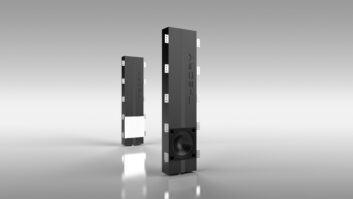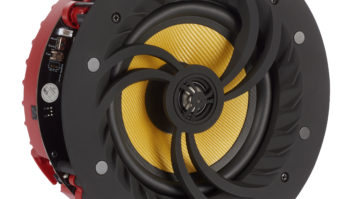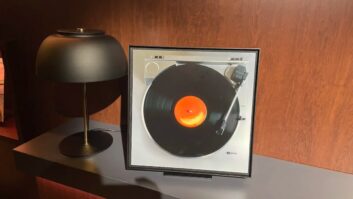Intent on riding the gain in distributed-audio sales, more companies are entering the distributed-audio market or expanding into new market segments here at the CEDIA Expo.
Newcomers include start-ups iCommand, Control4 and Meda Systems. They’re leveraging existing Ethernet and IP technologies to send control signals over a wired or wireless Ethernet network. Control4 and Meda also distribute audio over an Ethernet network.
Another distributed-audio newcomer is A/V supplier Jamo, and Rotel is returning to the fold.
The newcomers expect to tap into the growing awareness and popularity of installed distributed-audio systems, whose potential and sales continued to grow through 2003, market-research statistics show. The percentage of home builders offering standard or optional distributed-audio systems, for example, rose in 2003 to 64.5 percent from 2002’s 56.8 percent, according to the second annual builder survey conducted by the Consumer Electronics Association (CEA) and the National Association of Home Builders (NAHB).
The percentage of new homes sold with installed distributed-audio systems also rose, hitting 12 percent from 2002’s 8.6 percent, the survey found. (See By The Numbers, p. 16, for more survey results).
Actual sales through residential channels are also on the rise, according to Parks Associates. In 2003, the Dallas-based company contends that consumer-level purchases of custom-installed systems of all types grew 19 percent to $5.1 billion, including installation labor. Of that amount, audio systems accounted for $1.4 billion in hardware sales and installation costs, while home theater accounted for $1.39 billion, Parks said, basing its estimates on installer surveys conducted over the past two years. To take advantage of the growth potential, existing distributed-audio suppliers are expanding into new market niches, including single-zone and multizone satellite-radio receivers, most designed exclusively for integration into distributed-audio systems.
To expand into more affordable price points, select suppliers plan to launch their first receiver-based distributed-audio systems. Those companies are Audio Design Associates and Russound, which is also launching its first HDD music server. The Audioaccess division of JBL will return to the receiver-based distributed-audio segment.
Here’s what select distributed-audio suppliers expect to demonstrate:
Audio Design Associates: The company’s first distributed-audio receiver, shown in mock-up form at CES, is the two-tuner nine-zone 24×100-watt HTR-2400. The 8.75-inch-tall chassis packs a 16×100 (4 ohm) Class D amplifier, which powers eight A/V zones, and an 8×100-watt (4 ohm) Class A/B amp, which powers home theater speakers, including passive subwoofer. Up to eight A/V sources with composite video can be distributed simultaneously to remote rooms.
The receiver ships with standard AM/FM/Weather-band tuner card and separate XM satellite-radio card, making it the first A/V receiver with standard satellite-radio reception, the company said. The AM/FM card can be swapped for an XM card.
It will ship by Expo time at $9,999 for a version without color LCD display or front-panel controls. A version with a 16:9 7-inch color-LCD display and front-panel controls will cost $11,999. The LCD displays user interfaces and previews video content.
The receiver can be controlled from the company’s existing assortment of in-wall keypads and from new MC6011 series keypads, indoor versions that reduce keypad size to one gang, from two and three, and start at $399 each. Outdoor two-gang versions retail for $899 each.
Elan: The new SW series of three structured-wiring enclosures is the company’s first to use snap-in modules, which are compatible with the snap-in modules offered by sister company Open House. A total of 48 modules just became available, including HDTV modules. Like the AV/EC series, SW enclosures distribute phone, video and audio signals but add Ethernet-network capability for the first time and come with more video options, the company said. A/V functions are controlled from in-wall keypads, and wall plates deliver data, phone and A/V content to individual rooms.
Elan will also show a single-zone version of its four-zone Via DJ HDD music server, citing dealer requests for a single-zone model that distributes only one song at a time. Elan is targeting a price of about $2,000, compared to the current model’s $3,200 to $3,400. Rip speed will go to 20x from around 4x.
Also new: the company’s first 16-channel amp, a digital model, joining a 12-channel digital amp. The D1650, due in the fourth quarter at a suggested $2,199, uses Class T digital technology to deliver 16×65 watts RMS into 4 ohms or 16×45 watts into 8 ohms.
Jamo: The company’s first distributed-audio system is the Multiroom Control System, which is based on A-BUS technology. The control unit distributes audio to up to four zones and four subzones. Four models can be linked to expand distribution to 16 zones and 16 subzones. A-BUS technology distributes preamp-level audio, control signals and low-voltage power via CAT-5 cable to in-wall amplified keypads.
Additional details were unavailable.
Matrix Audio: The new Series Four, Series Six and Series Eight multi-room systems combine modular expandability with the company’s Speaker Wire Technology (SWT), which simplifies wire runs by simultaneously distributing control signals and speaker-level audio over the same speaker wire to in-wall keypads.
Each series consists of keypads and a multiroom controller that accepts amplifier modules, some of which feature SRS’s WOW audio processing.
Unlike the company’s previous systems, the new models are expandable to 64 zones and, in the case of the Series Six and Eight, distribute more sources simultaneously than before. Also unlike before, the new models can be controlled via a wired or wireless Ethernet network because of their IP ports, said Jeff Wait, U.S. sales director.
Also new: optional AM/FM tuner modules; the keypads’ ability to control 75 functions per source, compared with 18; an alarm-clock module; and an increase in power output to 40 watts per channel on two models, up from 20 watts per channel.
The controllers in each series can be configured internally to power two, four, six or eight zones, but expansion controllers deliver up to 64 zones.
The eight-source Series 8 controller delivers 2×40 watts per zone and costs $3,900 with two KP-8 keypads and amplifier modules for two zones. Every additional two-zone expansion costs $800 in keypads and amplifier modules.
Tuner modules retail for $300 each.
NetStreams: The new Musica 4602 distributed-audio system, an upgrade of the 4601, adds more amplified-keypad options, larger keypad buttons and a regulated power supply.
The latest addition to the system, a 50-watt amplified keypad with built-in FM tuner, is said to be the industry’s first keypad with built-in tuner. It joins tuner-less 25-watt and 50-watt keypads. All told, three keypads are available for the 4602, up from the predecessor system’s single 50-watt keypad.
The 4602 is built around a four-source, six-zone Audio Distribution Center that distributes up to four sources simultaneously. Additional Centers expand a system to 18 zones.
An optional higher power local amplifier is available, as is a Web-page-serving network interface that lets users control the system via any wired or wireless Web-browsing device, including PDA, Web tablet and PC. For wireless control, installers can add any 802.11b or 802.11g access point or router, the company said.













